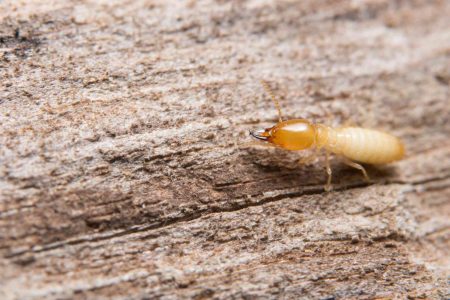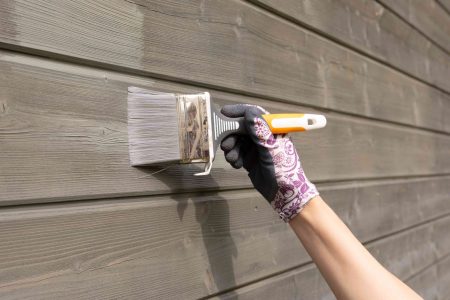A glowing fire pit creates a welcoming ambiance for backyard cookouts and fires. But smoke will hinder that enjoyment. A DIY smokeless fire pit reduces smoke to an almost imperceptible amount and brings everyone close to the fire, without the hassle or smell of smoke.
Learn the step-by-step process to make a DIY smokeless fire pit in less than a day, using only a few inexpensive materials and with basic skills.
What Makes a Smokeless Fire Pit Smokeless?
A smokeless fire pit is a mobile or permanent fire pit that produces very little or no visible smoke. Incomplete combustion is one reason why fire produces smoke. So a greater degree of combustion is achieved by creating more airflow to burn a hotter fire and by re-burning the smoke.
A smokeless fire pit has an inner chamber created by two side walls two inches apart. The fire’s primary smoke is drawn into the chamber and combusted a second time. Added air holes also help the fire burn hotter.
Safety Considerations
Wear eye protection and gloves when drilling or cutting metal.
What You’ll Need
Equipment / Tools
- 1 electric drill
- 1 annular drill bit, 3/4-inch
- 1 caulking gun
- 1 drill bit set
- 1 tape measure
- 1 pencil
- 1 roll painter’s tape
- 1 metal file
- 1 shovel
- 1 bubble level
Materials
- 1 metal fire pit insert or stock tank ring, 36 inches by 10 to 12 inches
- 1 tube fire-resistant sealant
- 1 tube landscape block adhesive
- 1 can high-heat spray paint
- 3 cubic yards granite drainage gravel, 1/4-inch
- 72 retaining wall blocks (each 4 inches high, 8-1/2 inches wide, and 8 inches deep)
Instructions
How to Make a DIY Smokeless Fire Pit
-
Mark Hole Locations on the Insert
Mark the location of the air vent holes along the top of the fire pit insert. Use the tape measure to mark down two inches. Each hole should be two inches apart, side-to-side.
-
Drill Holes on the Insert
Drill holes on the insert at each marked location, using a 1/4-inch drill bit. The drill bit should be appropriate for drilling in metal.
-
Enlarge Holes in the Insert
Chuck the annular drill bit into the electric drill and enlarge each hole on the insert to 3/4-inch.
-
File the Holes
File off burrs on the holes with the metal file.
-
Seal the Cracks
Seal cracks on the metal fire pit ring with fire-resistant sealant. This step is not necessary when using a metal stock tank ring.
-
Paint the Insert
Spray the inside and the outside of the fire pit insert with high-heat spray paint. Let the first coat thoroughly dry before applying a second coat.
-
Prepare the Fire Pit Base
Dig out a circle 60 inches in diameter by 2 inches deep and remove the turf, if any. Check for level with the bubble level. Fill the space with the 1/4-inch drainage gravel.
-
Create the First Tier of Pavers
Place the insert on the prepared gravel base. Build the first tier of paver stones around the insert, maintaining a gap of two inches on all sides. Remove four bricks at opposite ends of the bottom tier to feed air to the main fire. Remove the insert and set it aside.
-
Finish the Tiers of Pavers
Build upward, adding three more tiers. Glue blocks with landscape block adhesive. Stagger the blocks.
-
Add the Fire Pit Insert
Set the fire pit insert onto the tiers of blocks from above.
-
Test the Fire Pit Ring
Test the smokeless fire pit by lighting a fire. Smokeless fire pits usually will smoke at first until the secondary combustion process begins.
-
Can you make your own smokeless fire pit?
You can make your own smokeless fire pit by creating a secondary smoke combustion stage that re-burns the smoke. Because the fire burns hotter, it burns off smoke, as well. Masonry pavers and a metal insert are used to make a smokeless fire pit.
-
What makes a smokeless fire pit smokeless?
A smokeless fire pit is made smokeless by introducing more air to the system to burn the fire hotter and by creating a double wall to re-burn the primary smoke. Using a cleaner fuel source, such as well-seasoned wood, also helps to make a smokeless fire pit smokeless.
-
How do you build a smokeless campfire?
Build a smokeless campfire by digging a fire hole about 12 inches deep and 12 inches wide, then burrowing an eight-inch-wide tunnel out of the bottom that exits the ground about a foot away. Air drawn into the tunnel feeds the fire. Also, burn well-seasoned wood and not debris, and keep the fire small.
Read the full article here














